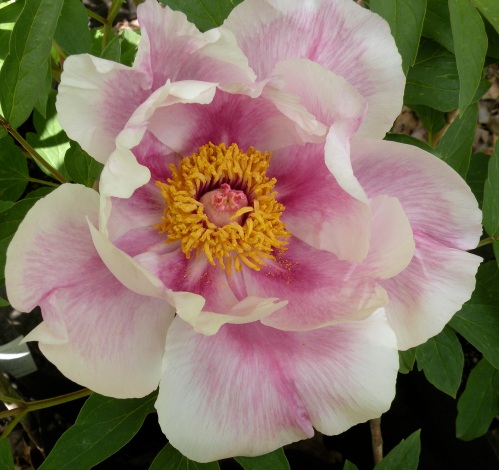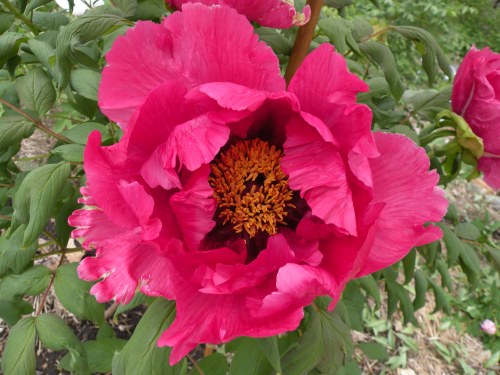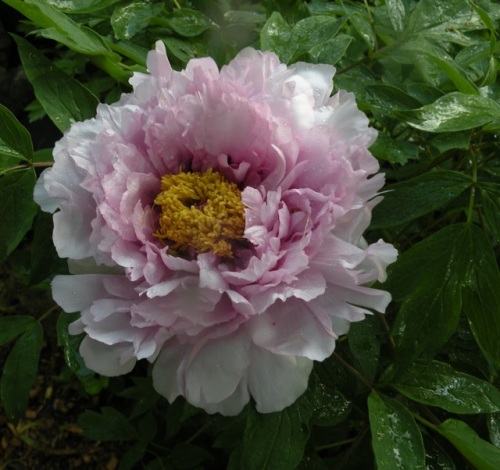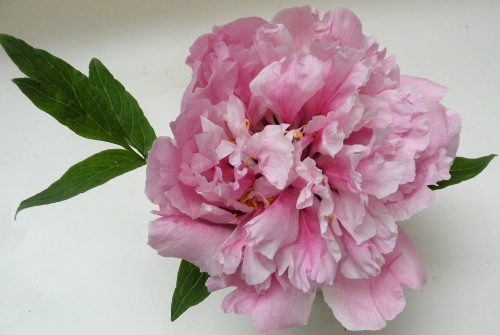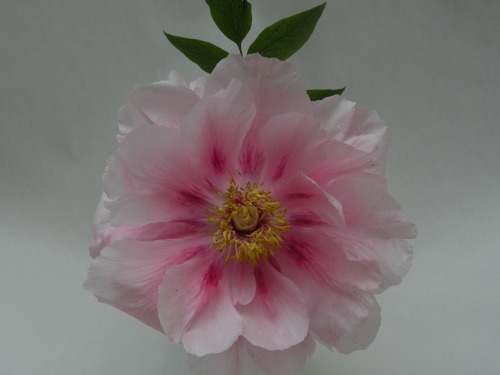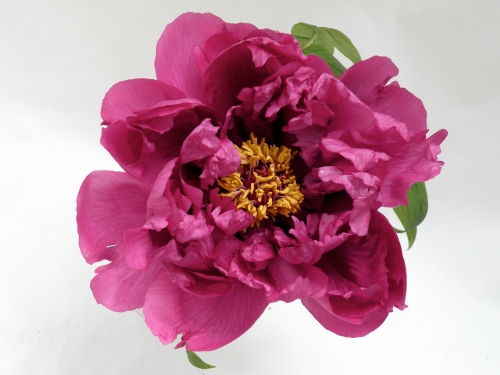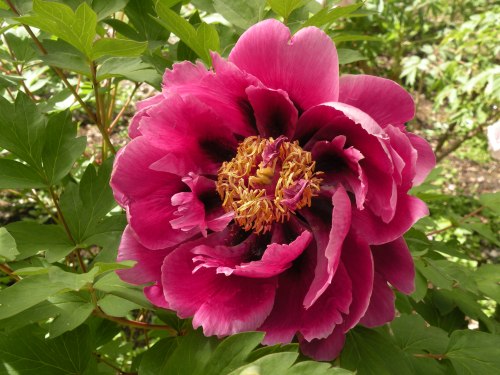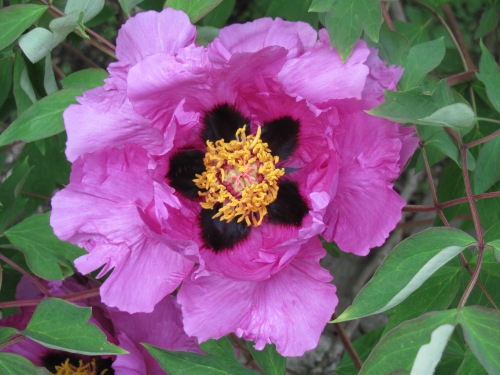For the past 15 years we have been collecting seeds from our favorite cultivars of Gansu rockii Chinese tree peonies. Over the past several years these test plants have begun to bloom. We are very pleased with the results, let us know what you think of the pictures below. We now find ourselves with more seedlings than we have room for, so we are offering in collections of three 1-2 year old seedlings.
Archive for the ‘Paeonia Rockii and Gansu Mudan’ Category
Seed grown Gansu Rockii Tree Peonies at Cricket Hill Garden
Posted in Paeonia Rockii and Gansu Mudan on May 29, 2013| 4 Comments »
Early Onset of Fall Dormancy of P. rockii Tree Peonies
Posted in Paeonia Rockii and Gansu Mudan, Tree Peony Care and Reference, tagged Fall Dormancy, P. rockii on September 6, 2012| 5 Comments »
Some of our favorite tree peonies we grow here at Cricket Hill Garden are hybrids of the wild species Paeonia rockii, also know as Gansu Mudan. This species of tree peony grows predominantly in Northwest China. The area around Lanzhou city in Gansu province is particularly known as a center for the breeding and propagation of P. rockii. We imported our first rockii tree peonies about fifteen years ago and were immediately enchanted. With their finely cut foliage and erect habit (mature specimens reach to well over 6′), P. rockii hybrids make for quite a regal planting. The blossoms are nothing short of spectacular, large and fragrant they are found in a range of colors, all sporting dark magenta flares at the base of each petal.
Snow Lotus is closely related to the wild species P. rockii.
Cup of Shining Night is one of our favorite P. rockii hybrids developed by Chen Dezhong of the Peony Peace Garden in China’s Gansu Province.
Over the years, we have noticed that our tree peonies with P. rockii heritage are much more likely to go into early dormancy during the late summer. With much of the county experiencing very hot and dry weather this summer, we have heard from many customers who have noticed that their P. rockii tree peonies leaves have turned brown and shriveled. This of course happens to all tree peonies as they drop their leaves and go into dormancy. Typically this occurs in early October here in Connecticut, however it seems to happen much earlier to P. rockii tree peonies during drier years. We have also noticed that P. rockii planted in the full sun loose their leaves much earlier than those planted in conditions of dappled or partial sunlight.

This P. rockii hybrid receives full morning sun but is shaded in the afternoon. It still retains most of its foliage, though some has begun to turn brown.

This P. rockii receives almost no direct sun and still has very green leaves. One of the great advantages of P. rockii is that they will grow and bloom well in more shade than other types of tree peonies. A shaded planting location like this more closely mimics the natural location in which P. rockii grows in the wild.

The effect of the strong summer sun on the foliage is clearly shown in this picture. Notice the brown and yellow leaves on the right side of the tree peony. This side receives full morning sun. The deep green foliage on the shrubs left side faces west but is shaded by tall trees and receives no direct afternoon sun.

The most extreme case. This P. rockii has had its leaves totally fried by the hot summer sun. It is planted in a full sun location in our garden.

Once the old leaves are removed, its clear that this plant has set good buds for next year. We do not find that early onset dormancy has any significant effect on overall plant performance. If your rockii tree peony has already gone into dormancy, remove the leaves and dispose of them in a hot, regularly turned compost pile or outside of the garden.

Planted only a few feet from the rockii shown in the previous picture is another Chinese tree peony which still retains most of its foliage. This particular plant is ‘Flying Swallow in a Red Dress’ and is a member of the Central Plains cultivar group. This type of tree peony is much farther removed by centuries of cultivation and selection from any of the wild species tree peonies than P. rockii hybrids. In our experience the foliage of the Central Plains cultivars holds up very well to full summer sun and drier conditions.
Though we have been grown tree peonies for almost a quarter century here at Cricket Hill, we continue to learn so much about these fascinating plants every season. In the future we plan to recommend that customers site their P. rockii tree peonies in locations that do not receive full sun all day. This is particularity true for growers in regions with hot summers were rainfall can be lacking.
Rockii Chinese Tree Peonies of Cricket Hill Garden 2012
Posted in 2011-2014 Peony Bloom Archive, Paeonia Rockii and Gansu Mudan on May 15, 2012| 3 Comments »
In the past week, our Chinese Paeonia rockii hybrids have come into full bloom. This cultivar group of tree peonies originates from China’s northwest Gansu Province. This is the native area to one of the several wild species of tree peonies. In Chinese this species is know as ziban mudan 紫斑牡丹 or “purple flare” tree peonies. Botanically this species is classified as P. rockii, after the botanical explorer Joseph Rock who “discovered” this plant in the early 1920s. Since their introduction to European and American gardens 90 years ago, these plants have been treasured by gardeners. For much of this time, the only plant available to gardeners was “Rock’s Peony.” These were propagated from the original seed grown stock sent to botanical gardens by Joseph Rock. Despite the rather recent introduction of these plants to western gardens, the area around the cities of Lanzhou and Linxia in Gansu have been centers of breeding and cultivation for centuries and hundreds of beautiful cultivars have been selected out by growers.
‘Snow Lotus‘ Xue Lian 雪莲 is the cultivar of the wild species P. rockii
Since we first imported rockii tree peonies over ten years ago we have been enchanted by their many endearing characteristics. Briefly, the plants are near uniformly vigorous and easy to flower. All are tall growing and will tolerate more shade than other tree peonies. The flowers are large, and oh so fragrant. Blossom color and shape range is quite diverse, though all are marked by the dark crimson or maroon flares at the base of the petals.
‘Blue Golden Lotus’ Lan Jin He 藍金荷
‘Cup of Shining Night‘ Ye Guang Bei 夜光杯
‘Blue Jade in Three Colors‘ Lan Yu San Cai 藍玉三彩
‘Black Tornado‘ Hei Xuan Feng 黑旋風
‘Blue Chrysanthemum’ Lan Ju Hua 藍菊花
‘White Chrysanthemum’ Bai Ju Hua 白菊花
‘Red Lotus’ Hong Lian 紅蓮
’Boundless Bright Sky‘ Qing Kong Wan Li 晴空萬里
‘Phoenix Hairpin‘ Chai Tou Feng 釵頭風
‘Daoist Pills in a Jade Stove‘ Yu Lu Lian Dan 玉爐練丹
Over the last 40 years, Chen Dezhong of the Peony Peace Garden outside of Lanzhou city has developed some truly outstanding cultivars. Will McLewin of Phedar Nursery in England has done peony aficionados a great service by helping Mr. Chen to compile a comprehensive, well-illustrated catalog of the amazing results of the Peace Garden’s tree peony breeding program. With the aid of their book, Peony rockii and Gansu Mudan, we have been able to identify many heretofore-unknown varieties in our collection. Some were mislabeled when they arrived; others had tags get lost over the course of a decade.
 Kasha, burning the midnight oil. It is somewhat maddening trying to discern the slight differences between varieties, there are so many that could easily be described as “white with a dark center.” After much hard work, we were able to identify the following varieties:
Kasha, burning the midnight oil. It is somewhat maddening trying to discern the slight differences between varieties, there are so many that could easily be described as “white with a dark center.” After much hard work, we were able to identify the following varieties:
‘Black Haired Girl’ 黑髮女郎
’Glory of the Sun and Moon’ Ri Yue Tong Hui 日月同輝
We have also been planting out seeds from some of our favorite rockii tree peonies for the last several years and saw some very interesting new plants bloom for the first time this season. Below are some of the Cricket Hill Garden rockii test plants which we hope to propagate and offer for sale in the future.
In case its still not apparent, this time of year we here at Cricket Hill live and breathe peonies. In a few months, we will also be drinking them!
Following a simple recipe for flower wine, we set up a gallon of tree peony petal wine as an experiment. Should be intoxicating!
